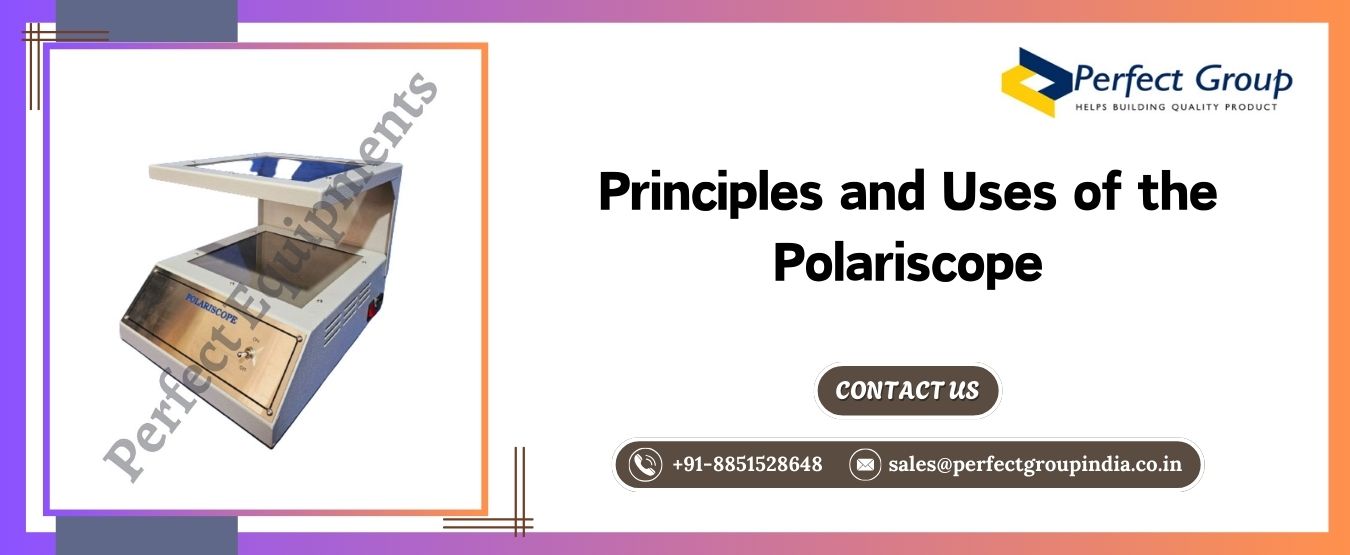Principles and Uses of the Polariscope
Introduction
A polariscope is a highly specialized optical equipment that uses polarized light to look into the optical properties of minerals and gemstones. Polarizing lenses are used to measure refraction, clarity and stress in materials by measuring light scattering patterns. The instrument is commonly used in geology, materials science and industry. This equipment uses the concepts of polarization and impact to show deeper structures and optical features that are normally unseen under normal lighting. The process helps in mineral identification, identifying crystal position and detecting internal stress inside samples.Everything About Polariscope
An optical instrument called a polariscope is used to analyze the optical properties of gemstones. A polarizer and an analyzer are the two polarized filters that are put above and below the surface on which the gemstone is set. Some optical features such as single or double refraction strain patterns and twinning are shown when a gem is seen through the device in polarized light. These features help in the identification of the gem.Principle of the Polariscope
Polarized light is the basis for how the polariscope functions. In its native state, light bounces in many different surfaces. Only light moving in a single plane can pass through a polarizing filter. The gemstone's crystal structure on stage is affected by this polarized light. The light path won't be changed if the stone is single refractive. If the stone is double refractive, on the other hand it will split the light into two rays which will provide visible optical effects when viewed through the analyzer.Key Uses
1. Identifying Optical Character (SR or DR)
Finding out if a stone is single refractive or double refractive is one of the main functions for this instrument. In the process of identifying gemstones, this is an important stage. Ruby and sapphire are double refractive while garnet and spinel are single refractive stones.2. Detecting Strain in Glass and Quartz
Both natural and manufactured materials can have internal stress detected by the polariscope. When the stone is turned between crossed polarizing filters, strain shows as patterns of interference or strain shadows. This is especially useful for identifying fake glass and differentiating it from genuine diamonds.3. Distinguishing Natural from Synthetic Stones
The strain patterns of synthetic stones are often different from those of their natural versions. Gemologists can spot these differences with a polariscope, especially in stones like sapphire, quartz and diamond imitations.4. Checking for Pleochroism and Twinning
The device can also be used to detect features that can help identify specific gems, such as twinning (intergrowth of crystals) and pleochroism (color shift when viewed from different angles).5. Confirmation of Isotropic and Anisotropic Gems
When turned in a polariscope, isotropic jewels such as garnet look dark but polar stones show flashes of light and dark because of double refraction. This method helps gemologists in effectively organizing and checking.Perfect Group India for Your Industrial Equipment Needs
Our goal at Perfect Group India is to provide gemologists with instruments that are accurate, long-lasting and reasonably priced. Our instruments are perfect for use in labs and fieldwork because of its comfortable layout, LED light and premium optics.What makes our equipment unique is this:
1. Superior Optical Quality: Ensures clear observation of optical phenomena.
2. Compact and Lightweight: Perfect for portability and easy handling.
3. Energy-Efficient Illumination: LED lights provide consistent brightness without overheating.
4. Affordable Pricing: Ideal for gem students, hobbyists and professionals alike.
The polariscope from Perfect Group India is an accurate instrument for teaching the principles of optical qualities in a classroom or for understanding gemstones in an advanced laboratory.
Tips for Using a Polariscope Effectively
Always clean the gemstone and stage before testing to avoid false readings caused by dirt or oils.
Rotate the stone slowly between crossed polarizers for full analysis.
Use a conoscope attachment for deeper insight into optic character and interference figures.
Practice with known samples to develop a keen eye for patterns and refraction behavior.
